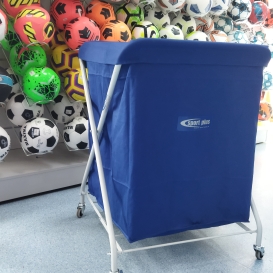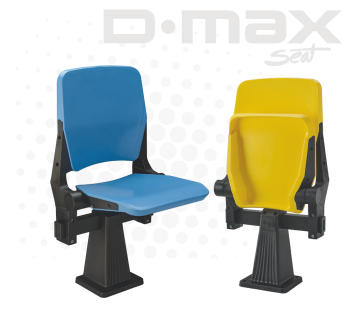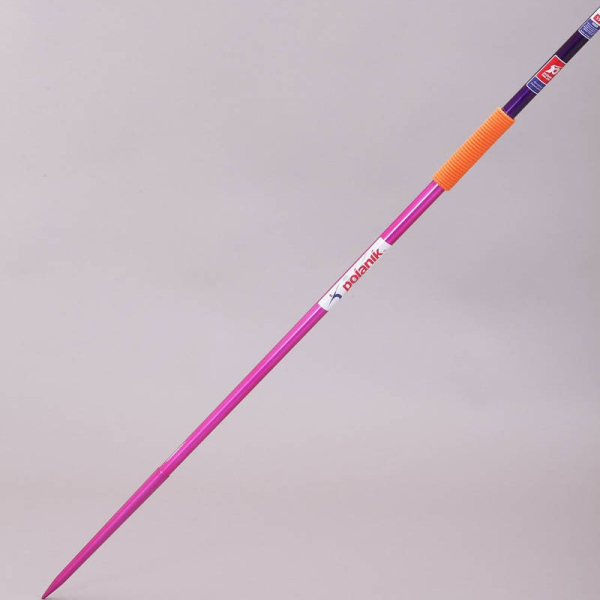Viewed products
Performance javelins
High-performance javelins are tools created for the highest achievements in athletics. They are designed with precision and attention to every detail to meet the rigorous requirements of both professional athletes and aspiring enthusiasts of the sport. They are made of advanced materials to provide ideal rigidity during throws. Every high-performance javelin in our range is certified by World Athletics, which guarantees compliance with global standards and the highest quality.Weapons in the fight for the podium - here are the performance javelins!
More useful information can be found at the bottom of the page-
Oszczep wyczynowy 800 g Air Flyer, AF10-800
662.97 PLN Tax inc.539.00 PLN NetCatalog no: 12-30029
Availability: Made to order -
Air Flyer 600 g performance javelin, AF10-600
573.33 PLN Tax inc.466.12 PLN NetCatalog no: 12-30035
Availability: Made to order -
Air Flyer 700 g performance javelin, AF10-700
617.31 PLN Tax inc.501.88 PLN NetCatalog no: 12-30032
Availability: Made to order -
Performance javelin 600 g, SC10-600
843.94 PLN Tax inc.686.13 PLN NetCatalog no: 12-30034
Availability: Made to order -
Performance javelin 700 g, SC10-700
909.90 PLN Tax inc.739.76 PLN NetCatalog no: 12-30031
Availability: Made to order -
Performance javelin 800 g, SC10-800
972.46 PLN Tax inc.790.62 PLN NetCatalog no: 12-30028
Availability: Made to order -
Performance javelin 500 g, SC12-500
828.71 PLN Tax inc.673.75 PLN NetCatalog no: 12-30037
Availability: Made to order -
Performance javelin 500 g, SM12-500
1,107.77 PLN Tax inc.900.63 PLN NetCatalog no: 12-30038
Availability: Made to order -
Performance javelin 800 g, SM10-800
1,290.44 PLN Tax inc.1,049.14 PLN NetCatalog no: 12-30027
Availability: Made to order -
Performance javelin 700 g with sharp arrowhead, SM10-700
1,205.86 PLN Tax inc.980.37 PLN NetCatalog no: 12-30030
Availability: Made to order
Helpful information about performance javelins in a nutshell
1 Construction and materials
The core of the javelin- This is the most important structural element, responsible for aerodynamics, strength and stability in flight. In the production of javelins, the most common material used is duralumin - a special aluminum alloy, which is characterized by a unique combination of lightness and strength. This metal provides the javelin with adequate rigidity, which is crucial for flight stability and minimizing vibration. A shaft that is too flexible could lead to unwanted deflection, which in turn would reduce accuracy and throwing range. In addition, the shaft is often covered with special paint coatings that protect against corrosion, improve aerodynamic properties, and may also have anti-static properties that reduce drag. In addition, some models use layers with a modified coefficient of friction, which allows more precise adjustment of the javelin's flight trajectory
Javelin spearhead
- This is the tip of the javelin, which is a key element affecting air penetration and final flight stability. The spearheads are usually made of hardened steel, characterized by high hardness, which causes the spearhead to retain its shape even after repeated impacts on the ground. This steel is a guarantee of their durability and resistance to deformation. However, more advanced models use arrowheads with a special shape in the form of a pointed cone or cylinder, which helps optimize the javelin's center of gravity and stabilize its flight. In addition, the surface of the spearhead can be coated with a zinc or chrome coating, which increases corrosion resistance and reduces friction, allowing smoother flights.
Handle and synthetic core
- The handle must provide a firm and comfortable grip, which is crucial for control of the javelin during the run-up phase and the throw itself. In modern high-performance javelins, grips are often made of synthetic materials such as polyurethane, which offers excellent grip and is resistant to moisture and sweat. In addition, the handles can be wrapped in cotton or synthetic tape, minimizing the risk of the equipment slipping from the hand during a throw. The inside of the shaft, on the other hand, is reinforced with a synthetic core, which is made of advanced composites such as carbon fiber or Kevlar, allowing the shaft to be lighter without sacrificing its strength. As a result, the athlete can achieve greater speed while maintaining adequate control of the javelin.
- Finally, the precise distribution of mass in the shaft, the use of an appropriately shaped spearhead, the modification of the geometry of the shaft and the use of various composite materials of the structure allow the javelin to maintain a stable trajectory. In the production process of javelins, the manufacturer pays special attention to the quality of surface finish and the accuracy of the assembly of individual components, so that the highest quality certified equipment by World Athletics from a reputable manufacturer is a guarantee of efficiency, excellent aerodynamics and balance of the equipment.
2 Technical parameters and certification
Weight and weight tolerances- One of the most important technical parameters of a high-performance javelin is its weight. Standard javelin weights are usually 500 g, 600 g, 700 g and 800 g, according to the requirements set by World Athletics. The choice of the appropriate javelin weight depends on the age category and gender of the athlete - for example, for men in the senior category the standard javelin weight is 800 g, while for women it is 600 g.
- An important aspect related to weight is also the weight tolerance, which determines the permissible deviation from the javelin's nominal weight. Typically, this tolerance is pd -6 g to +25 g, which means that a javelin can be minimally lighter or heavier than its nominal weight, but it must be within a certain range to be allowed to compete. Exceeding these limits can lead to disqualification of the javelin during the technical inspection before the competition.
Length and theoretical range
- The length of the javelin is another key parameter, affecting the aerodynamics and stability of the equipment. The standard length of high-performance javelins can vary depending on the weight and specifications of the model, but usually ranges from 2.2m to 2.7m. The length of the javelin is finely tuned to its weight, allowing for optimal balance and stable trajectory. A longer javelin, although it can provide a longer reach, also requires more precision and force during the throw. This parameter depends on, among other things, the shape, the balance of the shaft, the material of the arrowhead, as well as the athlete's throwing technique itself.
- In addition, stem stiffness and elasticity are also important; higher stiffness is more resistant to deformation during throwing, which translates into more stable flight and greater accuracy. However, higher stiffness goes hand in hand with the requirement for more force and precision from the player. Tapered arrowheads, for example, are most commonly used because of their ability to cut through the air with minimal resistance. Flexibility, on the other hand, referring to the javelin's ability to absorb energy during the throwing phase and convert it into propulsive force during flight, is important because a shaft with properly selected flexibility can "forgive" minor technical errors, which is especially important at the beginning of an athlete's career. The manufacturer is therefore obliged to find the optimal balance between stiffness and flexibility, falling within the standards set by World Athletics.
World Athletics certification
- Possession of a special WA (World Athletics) certification is a confirmation of the highest quality and that the model meets all international standards for technical parameters previously mentioned. Certified javelins are subjected to rigorous testing to verify their compliance with established standards and their ability to maintain technical parameters even after repeated use.
- WA certification is not only proof of high quality and compliance with all standards, but also a prerequisite for the javelin to be approved for use in official competitions, including world championships, the Olympic Games or other prestigious sporting events.
3 Application and practical advice in selection
Selecting a javelin for an athlete's level of proficiency- Athletes at different levels need different types of javelins. Beginners should look for javelins with a more flexible shaft, such as duralumin models. For advanced athletes, they should consider choosing high-density javelins, such as those made of carbon composites.
Javelin use: training vs. competition
- The choice of javelin should also depend on whether it will be used primarily for training or competition. Training models, such as those with a thicker shaft and steel spearhead, are more durable and wear-resistant, ideal for intense training sessions. Competition javelins are designed for maximum performance and may be lighter and better balanced.
Please visit the separate category of training javelins on our website, where you will find specific equipment specialized for the training needs of athletes: click on the link
Adjusting the javelin to the physical conditions of athletes
- Differences in athletes' physiques have a big impact on which javelin will be best for them. Athletes with greater body weight and strength may benefit from javelins with higher stiffness, which better transfer the generated energy to the throw. On the other hand, athletes with less body weight may prefer javelins with a more flexible shaft with greater controllability. Throwing technique also matters. Athletes with a more forceful technique may need a javelin with higher stiffness, better transferring the generated energy to the throw. On the other hand, athletes with lower body weight may prefer javelins with a more flexible shaft.
Ultimately, the choice of the right performance javelin depends on the individual needs of athletes or competition organizers and requires consideration of the previously mentioned aspects, among others.
We encourage you to browse our range of performance javelins or contact us so that we can select the most suitable and adequate equipment to suit your needs.
















